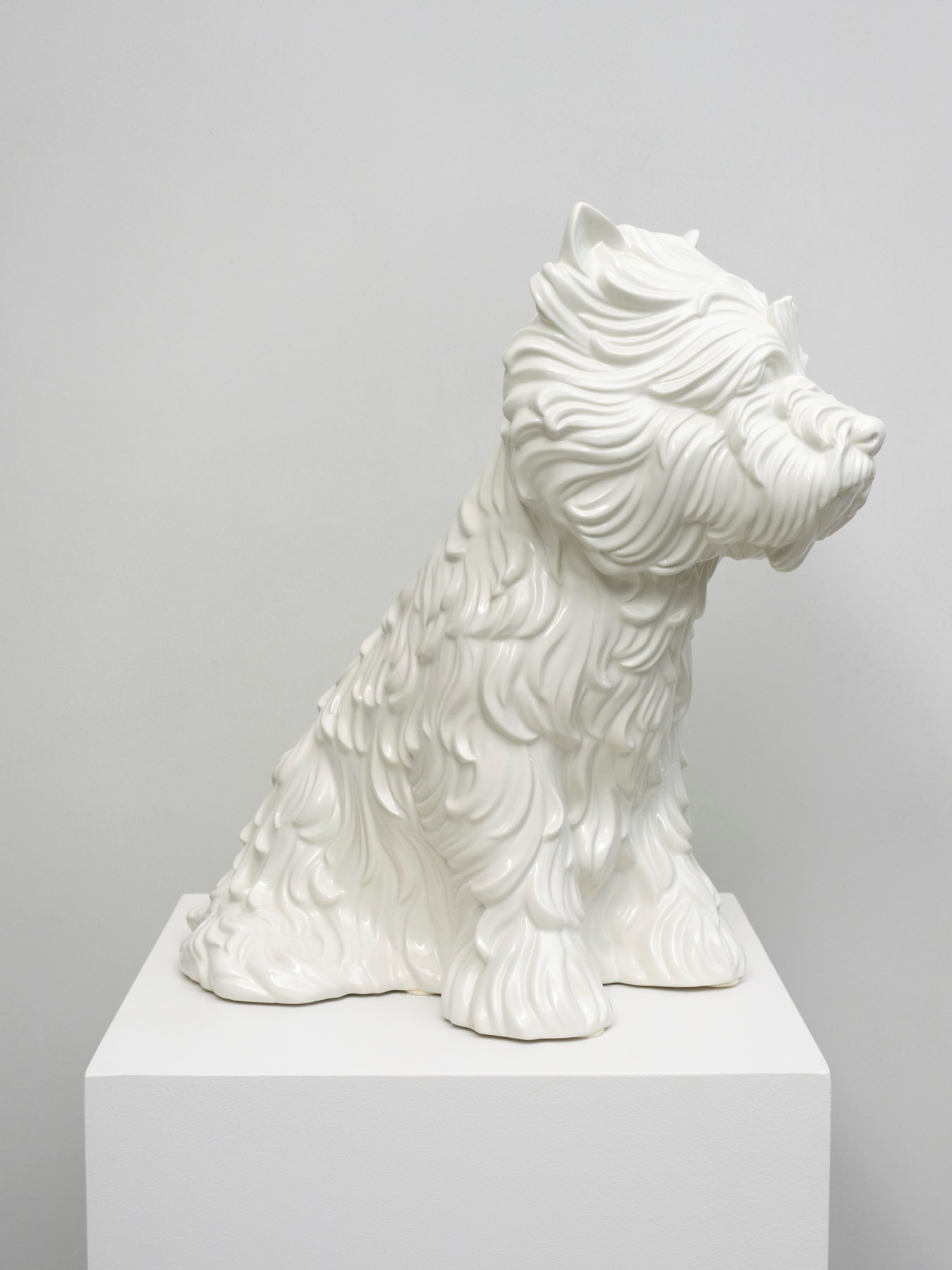Jeff Koons
Puppy first appeared as a twelve-and-a-half metre topiary in a northern German town in 1992. It was later reinstalled at the Guggenheim Museum in Bilbao, where it remains a permanent exhibit. The flowering work is among Koon’s more monumental sculptures, all of which are based on the most benign of everyday objects – inflatable balloons, children’s toys, trinkets. For Puppy, the artist chose not an object but a dog, a West Highland White Terrier, to serve as a symbol of love and happiness (his words). Koons later produced a porcelain edition of the same terrier, which, reduced in scale and glazed, appears much like the sort of knick-knack one might find at a flea market.
b.1955, York
There are few artists who inspire as loud and opposing reactions as Jeff Koons. Some believe his work genius, others call it “baloney”, “tone-deaf", and “dreadful”. But for every detractor, he has a champion, among them the New York Times art critic heavy-weight Roberta Smith, who was moved to publish a scolding article titled Stop Hating Jeff Koons. Precisely why Koons provokes such public outrage and vehement support is unclear – he is the first to tell anyone that his art is not about anything, that it has no agenda. His work is wonderfully, terribly perfect, manufactured into a smoothness devoid of error and error’s occasional magic. All his images and objects are coolly slick, but then that’s the point. This is where mass consumerism and art collide – the result flashy, superficial, self-consciously kitsch. The artist’s all-American, salesman’s smile, too, seems in on the act, a product made for media attention. Koons, after all, is a personality, an art superstar meets infomercial host. It is, as Smith writes, both fashionable and easy to hate the man and his work. But then, even those who detest Koons cannot deny his lasting influence. “You can’t imagine,” art historian Robert Hughes wrote, “America’s singularly depraved culture without him.”
